This is not another island story based on factual adventurous experiences, but a trip to one of Metro Manila’s pride when it comes to culture and heritage. Binondo is not a province, nor an island in the Philippine archipelago. It is literally Manila’s Chinatown where you will find an immense number of Chinese population, Chinese restaurants from left to right, hidden Buddhist temples, and a whole lot of diversified bits and pieces as the Chinese community unites with Filipino people and traditions.
Every Filipino has a Chinese blood flowing in their veins. But, as I wrote the introduction for this blog post, I swore to myself that I will save you guys from the extensive and time-consuming read about the history of the Fil-Chi community in the Philippines and how the Chinese influenced our Filipino forefathers. So let’s just use technology and read some history from Google and fast-forward to the best parts.
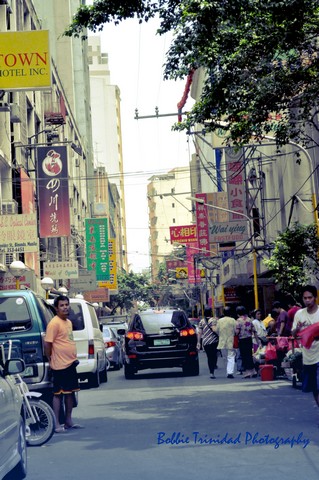
One of the streets in Binondo. That’s probably the widest it could get.
HOW TO GET TO BINONDO: You can travel by a private vehicle (but please note that parking in Binondo is not really its best asset) or you can try to commute. Ride LRT line going to Recto station and ride a jeepney going to Binondo. You may also opt to ride a tricycle from the LRT station to get there faster.
So in my entire years of existence as a Manila dweller, I was blessed with an opportunity to see Binondo by foot and what it has to offer (by foot, meaning I parked somewhere and explored the place. Haha). Unlike the “Chinatowns” in other countries, I must say that ours is the most vibrant. Binondo is jam-packed with vendors from all walks of life. It is either they sell their fresh produce in stands, they have a mini-store in alley ways, or they just sell their products in boxes by the side-walks.

Fruit & Vegetable Stand

Onions, Shallots, Mushrooms, and Herbs on the side-walk

Chinese, English, & Filipino Newspapers on a News Stand
I wandered in the colorful streets of Binondo in search for a street called Ong Pin. My Mom always told me that if I wanted some “authentic” Chinese food, I have to go to Ong Pin. So I did, but before I found the street, I discovered a whole new side of Binondo which I never saw in my previous visits. I never knew that the place has Buddhist Temples. I always thought that temples were spacey, and huge, and built with finest golds and red lanterns. The ones in Binondo were hidden, quiet, and they were just adorned with simple Buddhist pieces. I actually got to enter in one of the temples there (no photos allowed).

Candles and Incense, outside a Buddhist Temple, located in the very heart of Binondo.
Seeing how much the Chinese valued their faith, I realized that not all of them are Buddhist. I don’t know why each time I see a Chinese, I tend to think that he/she practices Buddhism. I used to think this way even when I’m not in the Philippines. Why Bobbie? Why? So thanks to traveling, I learned something. Hence during this mini photowalk, I realized that not all Chinese are Buddhist. Some are also Christians just by the looks of some structures around the area.

A Christian Church, not too far from the temple.
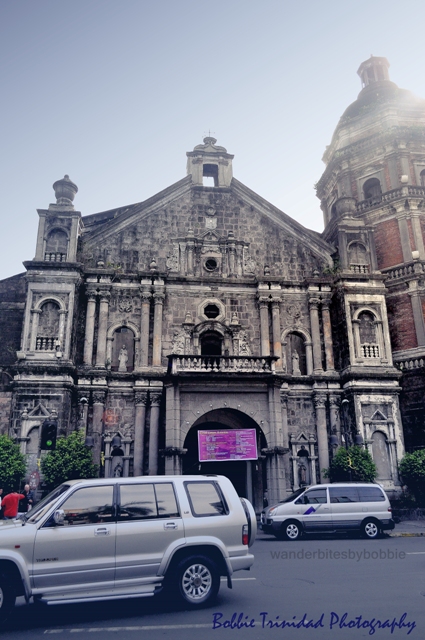
Binondo Catholic Church
So I carried on with my journey in search for Ong Pin. Only to find out that the street is just adjacent to Binondo Church (map skills 20, in a scale of 0-100). My hungry tummy probably brought me there as it functions like a GPS in times of cravings.
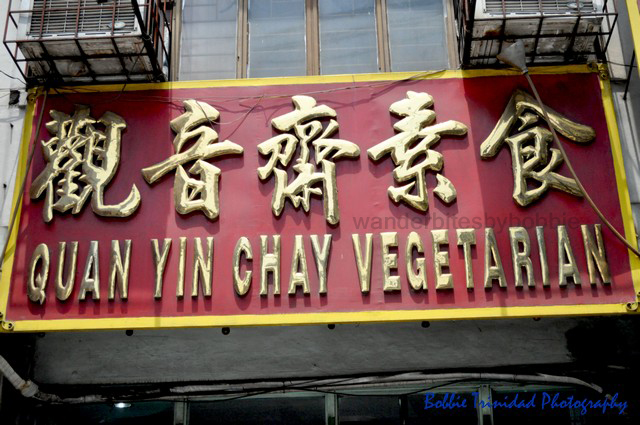
Best dumpling place in there.
My first stop was this dumpling place called Quan Yin Chay Vegetarian. I am certainly not a vegetarian, but I am a dumpling-fan. The best part of my visit to this dumpling place is that I got to see how they make the dumplings. You can have your dumplings steamed or fried.

Dumpling mix.

Vegetable Dumplings ready-to-eat served with soy-chili sauce.
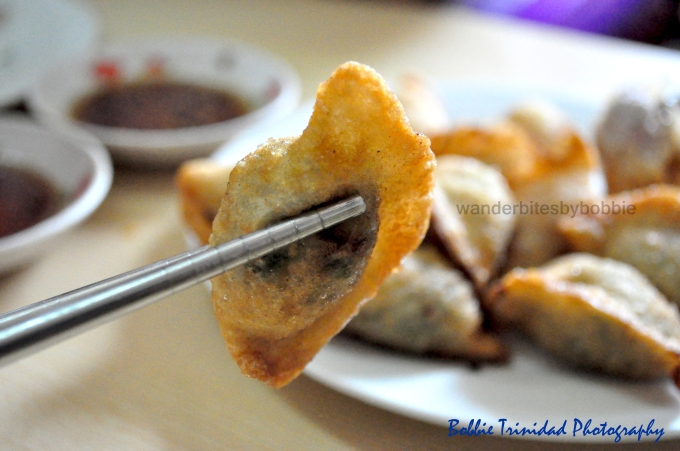
Fried version of their Vegetable Dumplings
So I gorged an entire plate of dumplings and went on to my next stop. I was looking forward to taste Mom’s favorite, Chinese Lumpia. I was never a fan of Chinese Lumpia when I was younger. It’s not like the usual Asian vegetable roll that we dip in garlic vinegar. It tastes like kinchay leaves, silantro, nuts, beans, carrots, tofu, some crunch, and sweet sauce combined all together in a lumpia wrapper. But thanks to my culinary school, my taste buds are now diversified. It’s not that bad after all. In fact, I crave for it at times.

Mom’s favorite, Chinese Lumpia
The journey doesn’t end there. I knew I had to take home something from Binondo and my favorite thing to bring home among the food choices are Kutchay Empanadas. I buy these from Polland Chinese Deli, they actually have a stall in Lucky Chinatown Mall, just outside the Supermarket.

Kutchay Empanadas – A MUST TRY!

What’s inside the Empanada: Pork, Tofu, Kutchay, Mushrooms, and Turnips
It was indeed a gastronomic mini photowalk, but before I left Binondo, I had to visit Cafe Mezzanine. During my days as a Culinary student we were introduced to the cafe’s owner who was literally a fireman. It is also known as Volunteer Fireman’s Cafe, thus the fireman helmets and suits hanging around the place. But, I did not come for the firemen photos, I came for the food. LOL.

Mr.Ube’s Purple Firetruck parked outside Cafe Mezzanine
They have the best Beef Wanton Noodles and Asado Siopao in town. During my earlier visit as a student, we were served with Cold Buchi with sweet syrup as welcome snacks. It had peanut paste inside which gave the snack a marriage of wonderful flavors, it particularly gained enough appeal to me (I have a strong lovely relationship with peanut butter).

Mochi Balls in Sweet Syrup.
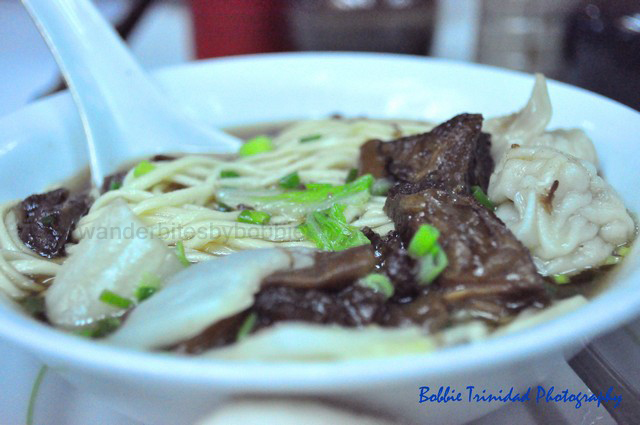
Beef Wanton Noodles

Asado Siopao
Aside from “occasional” food-binging, there are still a lot of things that you can do around Binondo if you’re not that of a foodie. You can shop for authentic Chinese ingredients, or you might want to try for a ride on a kalesa (a carrier pulled by a trained horse. Aside from some provinces, you can only do this in the city of Manila. Not the entire Metropolitan Manila has it). You can also walk a little further and visit Manila’s shopping Mecca, Divisoria. Check out tales of Divisoria shopping in my bestfriend’s blog. 🙂

Kalesa in the middle of Binondo traffic

Asian ingredients from a Chinese grocery store.
More of my Binondo photos, as well as my other travel photos in my travelogue, Post Cards from the Philippines.












